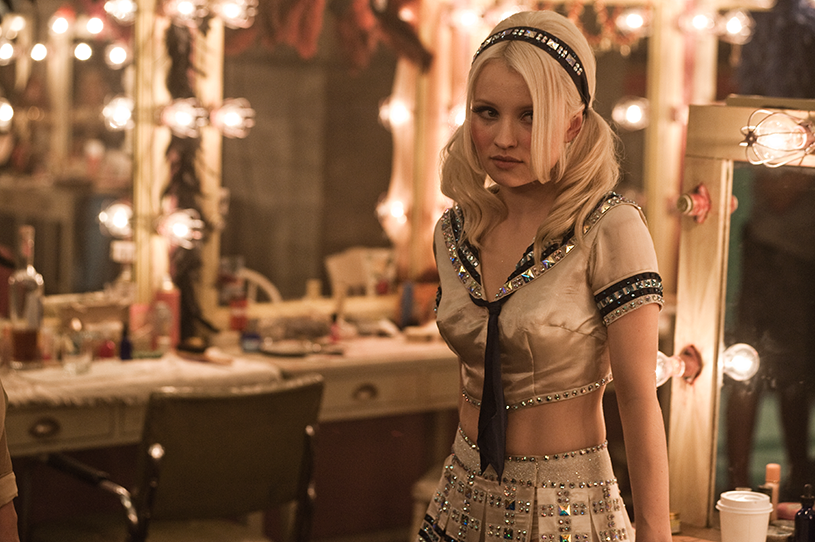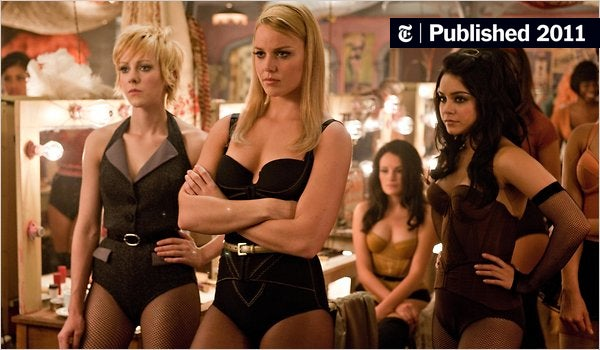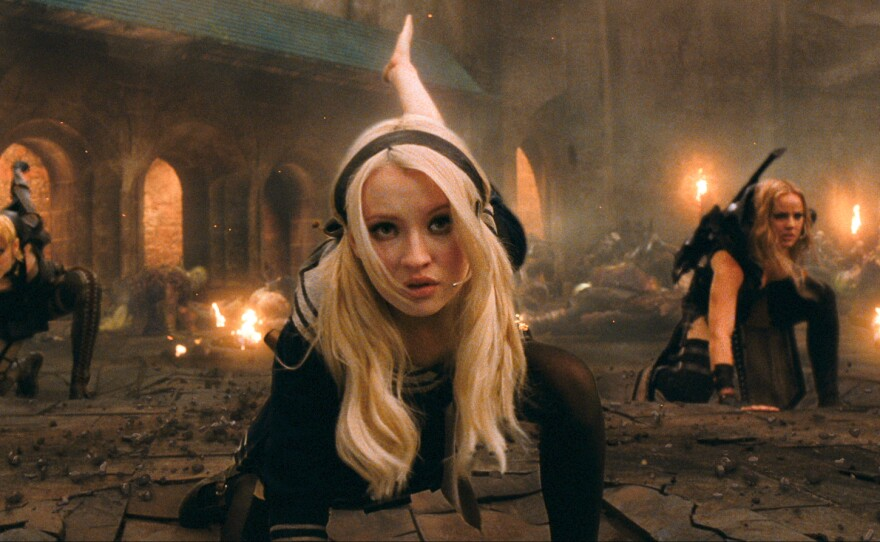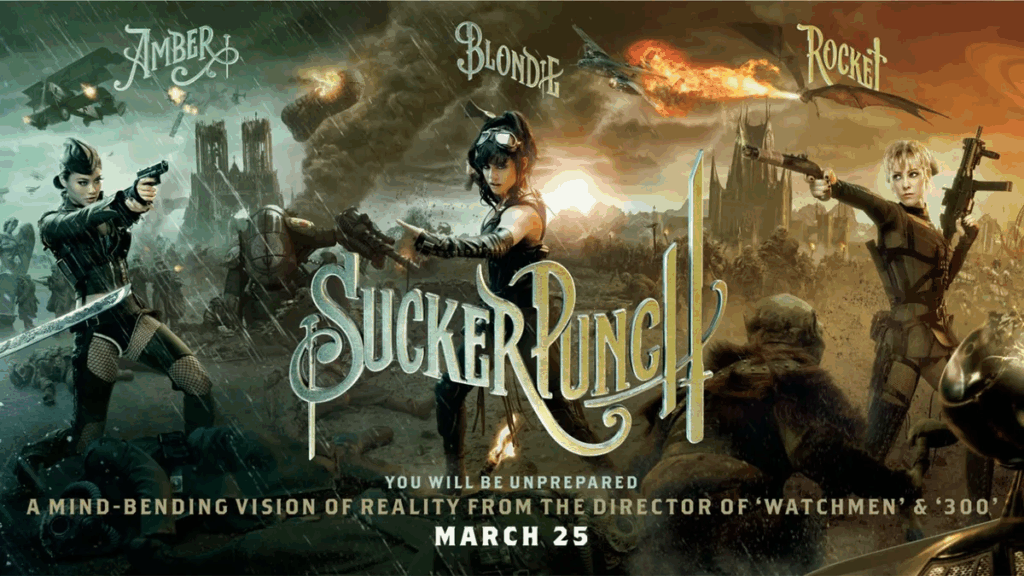Sucker Punch

Sucker Punch (2011): A Visually Stunning, Divisive Cinematic Experiment
Released on March 25, 2011, Sucker Punch is a bold and polarizing action-fantasy film directed and co-written by Zack Snyder, known for 300 and Watchmen. Marketed as a high-octane, female-led spectacle, the film blends steampunk, science fiction, and psychological drama, weaving a multi-layered narrative that challenges audiences to question reality, empowerment, and the *** gaze. Despite its ambitious vision and striking visuals, Sucker Punch divided critics and audiences, earning a 22% approval rating on Rotten Tomatoes and sparking debates over its themes and execution. Over a decade later, the film has garnered a cult following, with fans advocating for the release of Snyder’s original director’s cut. This article explores Sucker Punch’s origins, plot, production, reception, and enduring legacy.

Origins and Concept
Sucker Punch marks Zack Snyder’s first original screenplay, co-written with Steve Shibuya, diverging from his previous adaptations of comic books like 300 and Watchmen. Development began in March 2007, with Warner Bros. greenlighting the project in early 2009 following the success of Watchmen. Snyder envisioned Sucker Punch as a “stylized motion picture about action and landscapes of the imagination,” drawing inspiration from video games, anime, and exploitation genres like women-in-prison films. The title “Sucker Punch,” a term for an unexpected blow, reflects the film’s thematic twist, critiquing the audience’s complicity in objectifying its characters.
Set in the 1960s with anachronistic elements, the film operates on three narrative levels: a grim “reality” in an asylum, a sub-reality in a brothel, and fantastical dream worlds where action sequences unfold. Snyder described it as a “show within a show within a show,” aiming to explore the fine line between exploitation and empowerment. The film’s aesthetic, steeped in steampunk and pop-culture references, combines gritty realism with surreal fantasy, creating a visually distinctive but narratively complex experience.

Plot and Structure
Sucker Punch follows Babydoll (Emily Browning), a young woman institutionalized in Lennox House for the Mentally Insane by her abusive stepfather after a tragic accident results in her sister’s death. Facing a lobotomy in five days, Babydoll retreats into a coping mechanism: an alternate reality where the asylum is a lavish brothel run by the manipulative Blue Jones (Oscar Isaac). Here, she and fellow inmates—Sweet Pea (Abbie Cornish), Rocket (Jena Malone), Blondie (Vanessa Hudgens), and Amber (Jamie Chung)—are forced to perform for clients. Under the guidance of Madame Gorski (Carla Gugino), Babydoll’s entrancing dances trigger vivid fantasy sequences where the women become invincible warriors battling samurais, steampunk zombies, dragons, and robots.
To escape, Babydoll devises a plan to collect five items: a map, fire, a knife, a key, and a mysterious fifth element. Each item is obtained through a fantasy battle, triggered by her dances, which serve as metaphors for her psychological resistance. The narrative weaves between the asylum, brothel, and fantasy worlds, blurring the lines of reality. The film’s ending reveals a twist: [spoiler alert] Babydoll sacrifices herself, allowing Sweet Pea to escape, suggesting the entire story may be a projection of Sweet Pea’s psyche, with Babydoll as her imagined guardian. This layered structure, coupled with narration about controlling one’s destiny, leaves the film open to interpretation.

Creative Team and Cast
Directed by Zack Snyder, Sucker Punch boasts a talented ensemble. Emily Browning stars as Babydoll, bringing vulnerability and quiet defiance to the role (Amanda Seyfried was considered but unavailable due to scheduling conflicts). Abbie Cornish shines as Sweet Pea, the group’s reluctant leader, while Jena Malone, Vanessa Hudgens, and Jamie Chung deliver compelling performances as Rocket, Blondie, and Amber. Supporting roles include Oscar Isaac as the menacing Blue Jones, Carla Gugino as the enigmatic Dr./Madame Gorski, and Scott Glenn as the Wise Man—a guide-like figure in the fantasy world.
The production team included Rick Carter as production designer, with visual effects by Animal Logic and Moving Picture Company creating over 120 shots to construct the film’s elaborate dreamscapes. The soundtrack, featuring a haunting cover of “Sweet Dreams” by Emily Browning and tracks like Björk’s “Army of Me,” heightens the emotional resonance. Snyder’s signature slow-motion and stylized visuals—marked by saturated color palettes of greys, greens, and blues—define the film’s gothic aesthetic.

Production Details
Filming wrapped on January 22, 2010. Initially planned for 3D release, Warner Bros. opted for a traditional 2D presentation to better serve Snyder’s cinematic style. The original cut, intended to be R-rated, was trimmed by 17 minutes to achieve a PG-13 rating. The uncut version, released later on Blu-ray, restores pivotal scenes, including a post-lobotomy musical number that adds emotional context and narrative closure.
The film had a production budget of approximately $82 million but grossed only $89 million worldwide—an underperformance relative to expectations. Snyder’s “Maximum Movie Mode” Blu-ray commentary and the animated shorts fleshing out the fantasy realms have since helped reframe the film for home audiences.

Themes and Interpretation
Sucker Punch is a challenging, layered film that explores empowerment, trauma, and the *** gaze. Snyder intended it as a meta-commentary—inviting viewers to revel in action and fantasy while confronting their complicity in how female characters are viewed and portrayed. The protagonists, dressed in stylized combat outfits, fight in surreal worlds to escape *** control, yet critics have argued the film indulges in the very dynamics it critiques.
Some scholars interpret the story as a pessimistic examination of systemic *** oppression, presenting only the illusion of agency within male-dominated frameworks. The layered structure—possibly representing Sweet Pea’s internal psychological journey—suggests Babydoll may be a fragment of her identity or a metaphorical guardian.
References to classic musicals in the brothel’s décor and a video-game-like mission structure reinforce themes of performance and illusion. The film questions whether survival, sacrifice, and resistance can exist meaningfully within *** systems of control.

Critical Reception and Controversy
Upon release, Sucker Punch was met with harsh reviews. Critics cited a confusing plot, underdeveloped characters, and conflicting messages about *** empowerment. It holds a 22% rating on Rotten Tomatoes. Reviewers like Monika Bartyzel called it “a *** fantasy masquerading as empowerment,” while Peter Debruge dismissed it as flashy but empty.
The film’s darker themes—such as mental illness, abuse, and lobotomy—drew criticism for their handling, with some viewers calling them exploitative. The decision to market the film to younger audiences while containing disturbing material led to further controversy.
Nevertheless, some critics and cinephiles defended the film’s ambition and subversive intent. Keith Uhlich of Time Out New York included it in his Top 10 Films of 2011, while others praised its “savage deconstruction” of genre norms. The online #ReleaseTheSnyderPunch movement, championed by fans and cast alike, continues to call for the full director’s cut.

Legacy and Reappraisal
In the years since its release, Sucker Punch has gained a niche fanbase. Some argue it was ahead of its time—an imperfect but visionary attempt to interrogate *** culture’s objectification of women through a stylized lens. Comparisons to video games, anime, and postmodern musicals have recontextualized it as a work of experimental, symbolic storytelling.
The film’s visual aesthetic—clockwork environments, slow-motion battles, stylized fight choreography—has influenced music videos, gaming culture, and cosplay communities. Despite criticisms of narrative confusion, its ambition, aesthetic boldness, and thematic provocations continue to inspire discussion.

Conclusion
Sucker Punch (2011) is a cinematic paradox: an exhilarating visual experience that both embraces and critiques the conventions of genre and *** fantasy. Zack Snyder’s dark fairy tale of psychological escape, trauma, and resistance defies simple categorization. With a stellar cast, mesmerizing action, and a haunting score, it’s a flawed yet unforgettable film that rewards repeat viewings.
For those intrigued by its deeper meanings, the extended cut offers a richer experience. Whether seen as a feminist fable, a video game dreamscape, or a *** culture critique, Sucker Punch leaves a lasting impression—one that continues to provoke debate and devotion more than a decade later.